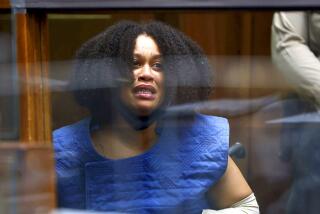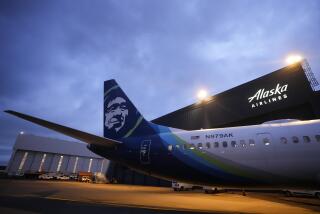Lack of Access to Medical Records Worries NTSB : Air safety: Panel sought controllers’ files in inquiry of fatal collision at LAX in February. Hearings open today.
Federal investigators are concerned over their inability to get copies of the medical records of a key air traffic controller as hearings are set to open here today into the fatal collision of two airliners at Los Angeles International Airport last February.
The crash that killed 34 people occurred when the controller, Robin Lee Wascher, gave a USAir jetliner permission to land on the same runway that she had just positioned a SkyWest commuter liner for takeoff.
The National Transportation Safety Board had asked for the medical records of Wascher and other controllers as part of its investigation into the crash. However, on Feb. 22, James B. Busey, administrator of the Federal Aviation Administration, which employs the controllers, declined to release the files.
In his letter to James Kolstad, the NTSB chairman, Busey said his refusal to release the files was based on his belief “that the board has neither qualified medical personnel on staff to review such records nor procedures to assure confidential treatment.”
The NTSB replied that medical experts from the Department of the Army were available to review the files and said procedures to assure privacy were adequate.
NTSB member Jim Burnett, saying he felt records that might reflect on the controllers’ ability to perform their duties were a proper subject of the probe, complained to members of Congress that the files were not released.
After further discussions, NTSB investigator Jim Dannaher was permitted to look at--but not have copies of--the files, an NTSB source close to the investigation said.
“But that really wasn’t enough,” said the source, who asked not to be identified. “His report was in no way explicit. There wasn’t enough detail. . . . We settled for something less than appropriate.”
NTSB spokesman Ted Lopatkiewicz confirmed that his agency’s investigator had only been able to make notes about the medical records.
“They will not be in (records to be made public today) because of federal privacy laws,” he said. “The board will have to analyze the information and it will be up to them to determine if it’s adequate.”
FAA spokesman Paul Steucke said in Washington that as far as he knew, the NTSB had been given complete and adequate access to the records it requested.
Busey noted in his letter to Kolstad that in August, 1988, the FAA had amended its policy to provide for the release of controllers’ medical records to the board “as routine use.”
He said the policy had been amended “in recognition of the board’s interest in determining whether air traffic controllers whose conduct may have been a factor in an accident had the physical and psychological capacity to perform their assigned functions.”
Dannaher’s report on the controllers’ medical records will be made public today, when week-long hearings on the crash open at the Los Angeles Airport Hilton Hotel. Testimony from Wascher and other witnesses will begin Tuesday.
Wascher, who was placed on leave from her duties at the Los Angeles control tower immediately after the accident, has returned to work. Instead of directing traffic at the airport, FAA officials said, she is performing administrative duties at the FAA regional headquarters in Hawthorne.
Her career as a controller began with the U.S. Air Force, which she joined after graduating from Thousand Oaks High School and attending Moorpark Junior College.
She was serving as an Air Force controller in 1977 and was en route to a new assignment at Elmendorf Air Force Base, near Anchorage, Alaska, when word came that her parents had been killed in the crash of their private plane near Eureka.
Friends said the young woman was devastated by the accident.
Five weeks later, she was discharged from the Air Force. The reasons for the discharge have not been made public.
Five years later, Wascher enrolled in the FAA academy in Oklahoma City as one of the replacements hired after thousands of striking controllers were fired by President Ronald Reagan. She served as an FAA controller at fields in Mississippi and at the airport in Aspen, Colo., before her transfer to Los Angeles in 1989.
Wascher has told federal investigators that she confused the SkyWest commuter plane with another plane when she directed it into the path of the landing jetliner.
Friends and colleagues said the lapse was not typical of Wascher, whom they describe as a precise, no-nonsense professional.
Among others testifying at this week’s hearings will be other controllers, the surviving co-pilot of the Boeing 737 and numerous eyewitnesses. Testimony will also be heard from experts in aviation safety, much of it centering on evidence that many victims survived the impact of the crash, only to succumb in the flames that swept through the two devastated aircraft.
Sources said one of the questions to be raised is whether Boeing 737s can be retrofitted with additional emergency exits.
While investigators have described the events that led to the accident, they have yet to analyze the incident or issue opinions as to the cause.
More to Read
Inside the business of entertainment
The Wide Shot brings you news, analysis and insights on everything from streaming wars to production — and what it all means for the future.
You may occasionally receive promotional content from the Los Angeles Times.










